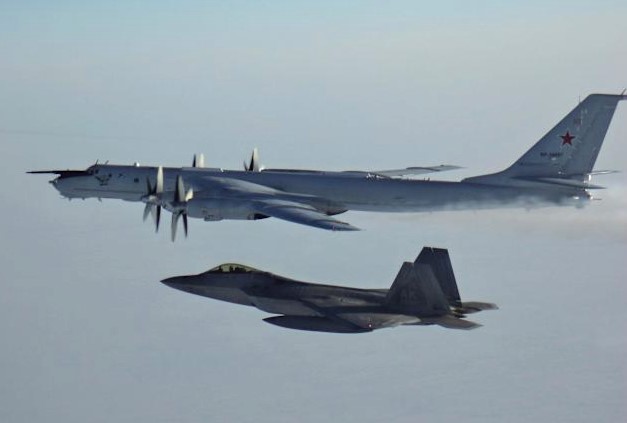The United States military reported a tense encounter over the weekend. A Russian spy aircraft flew close to American airspace near Alaska. The military identified the aircraft as an IL-20 COOT reconnaissance plane. NORAD detected it in the Alaskan Air Defense Identification Zone, also called the ADIZ.
Russian Spy Aircraft Detected in Alaskan Air Defense Zone
The ADIZ is an area of international airspace monitored by U.S. and Canadian forces to ensure security near their sovereign airspace. Any aircraft flying through this zone must be identified quickly, as it lies close to the territorial airspace of both countries.
According to reports, the Russian spy aircraft did not enter U.S. or Canadian sovereign airspace. Instead, it remained in the ADIZ, which stretches far out into international skies but still requires close surveillance. Even though it stayed outside official borders, such activity draws attention because of its proximity to North America.
Revenge from the Shadows! Ukraine’s Spy Agency Crushes Russian Air Power with Covert Drone Swarm
Military officials explained that this type of movement by Russian spy aircraft has happened before and is considered routine. However, each instance requires a careful response to ensure there are no risks to national security.
U.S. Fighter Jets Scramble to Intercept Russian Spy Aircraft
As soon as NORAD, the North American Aerospace Defense Command, detected the Russian spy aircraft, it dispatched a response team. The command sent two F-16 fighter jets into the skies to intercept the reconnaissance plane. Alongside them, an E-3 Sentry radar plane provided tracking support, while two aerial refueling tankers ensured that the mission could continue without interruptions.
The main task of the U.S. jets was to visually confirm the identity of the Russian spy aircraft and monitor its movements. This is standard practice whenever an unidentified or foreign plane enters the ADIZ. Intercept missions allow U.S. and Canadian forces to show presence, verify details, and keep a close watch on the situation.
US Military Watch: More Spy Planes Deployed to Track China, Russia, North Korea
NORAD later confirmed that it had successfully identified the IL-20 COOT and that the plane did not attempt to cross into restricted airspace. U.S. aircraft intercepted it smoothly, and all planes returned safely after completing their tasks.
The IL-20 COOT, a Russian spy aircraft, typically collects intelligence. Its flight near Alaska highlights the importance of the ADIZ, where U.S. and Canadian forces closely monitor foreign aircraft. Even though such flights occur in international skies, the response ensures there are no surprises for North American defense forces.
Repeated Activity in the Same Week
The interception over the weekend was not the first of its kind in recent days. Just earlier in the same week, on both Wednesday and Thursday, a Russian spy aircraft had also been detected flying through the same Alaskan Air Defense Identification Zone.
Each time, NORAD scrambled aircraft to intercept and make visual confirmation. This repetition of flights highlights the ongoing vigilance required in monitoring the ADIZ. While officials noted that these flights are not unusual and do not pose a direct threat, the procedures followed remain strict.
U.S. and Canadian defense teams routinely intercept Russian spy aircraft in the ADIZ as part of their duties. They check every aircraft, and they keep responses ready around the clock to ensure the safety of national airspace.
GlobalEye Overpowers E-7 in High-Stakes Battle for Spy Plane Superiority in Nordic Region
The ADIZ, though it does not count as sovereign territory, plays a key role in safeguarding the approaches to North America. It serves as an early warning shield, and it allows defense forces to respond quickly whenever foreign planes fly nearby. This is why defense teams take any detection of Russian spy aircraft such as the IL-20 COOT seriously and respond to it immediately.
Officials emphasized that defense forces encounter such situations often, and they view them as part of the regular security measures in the region. Each mission ensures readiness and confirms that no unauthorized aircraft are able to cross into protected skies.

